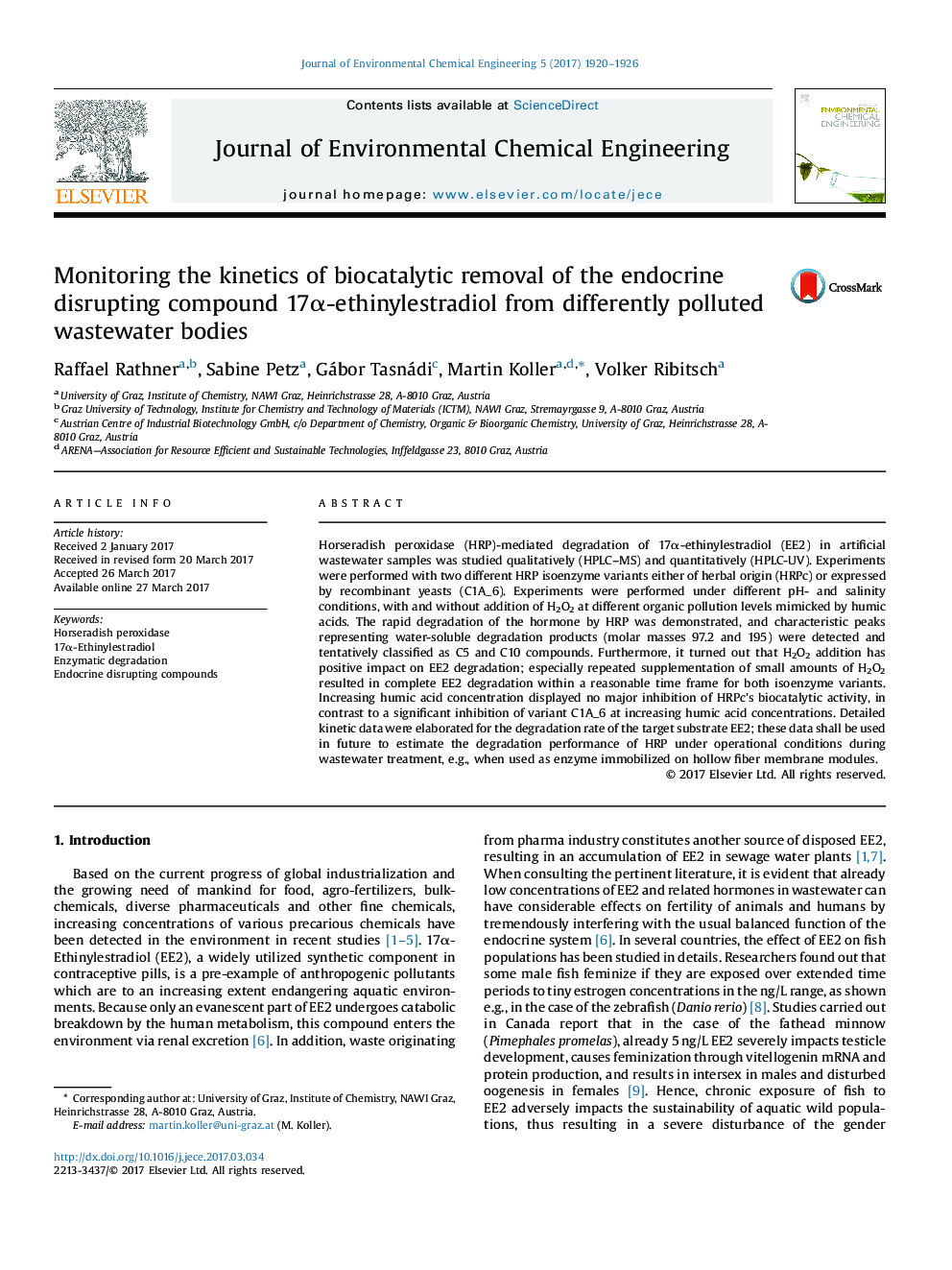| Article ID | Journal | Published Year | Pages | File Type |
|---|---|---|---|---|
| 4908530 | Journal of Environmental Chemical Engineering | 2017 | 7 Pages |
Abstract
Horseradish peroxidase (HRP)-mediated degradation of 17α-ethinylestradiol (EE2) in artificial wastewater samples was studied qualitatively (HPLC-MS) and quantitatively (HPLC-UV). Experiments were performed with two different HRP isoenzyme variants either of herbal origin (HRPc) or expressed by recombinant yeasts (C1A_6). Experiments were performed under different pH- and salinity conditions, with and without addition of H2O2 at different organic pollution levels mimicked by humic acids. The rapid degradation of the hormone by HRP was demonstrated, and characteristic peaks representing water-soluble degradation products (molar masses 97.2 and 195) were detected and tentatively classified as C5 and C10 compounds. Furthermore, it turned out that H2O2 addition has positive impact on EE2 degradation; especially repeated supplementation of small amounts of H2O2 resulted in complete EE2 degradation within a reasonable time frame for both isoenzyme variants. Increasing humic acid concentration displayed no major inhibition of HRPc's biocatalytic activity, in contrast to a significant inhibition of variant C1A_6 at increasing humic acid concentrations. Detailed kinetic data were elaborated for the degradation rate of the target substrate EE2; these data shall be used in future to estimate the degradation performance of HRP under operational conditions during wastewater treatment, e.g., when used as enzyme immobilized on hollow fiber membrane modules.
Keywords
Related Topics
Physical Sciences and Engineering
Chemical Engineering
Chemical Engineering (General)
Authors
Raffael Rathner, Sabine Petz, Gábor Tasnádi, Martin Koller, Volker Ribitsch,
